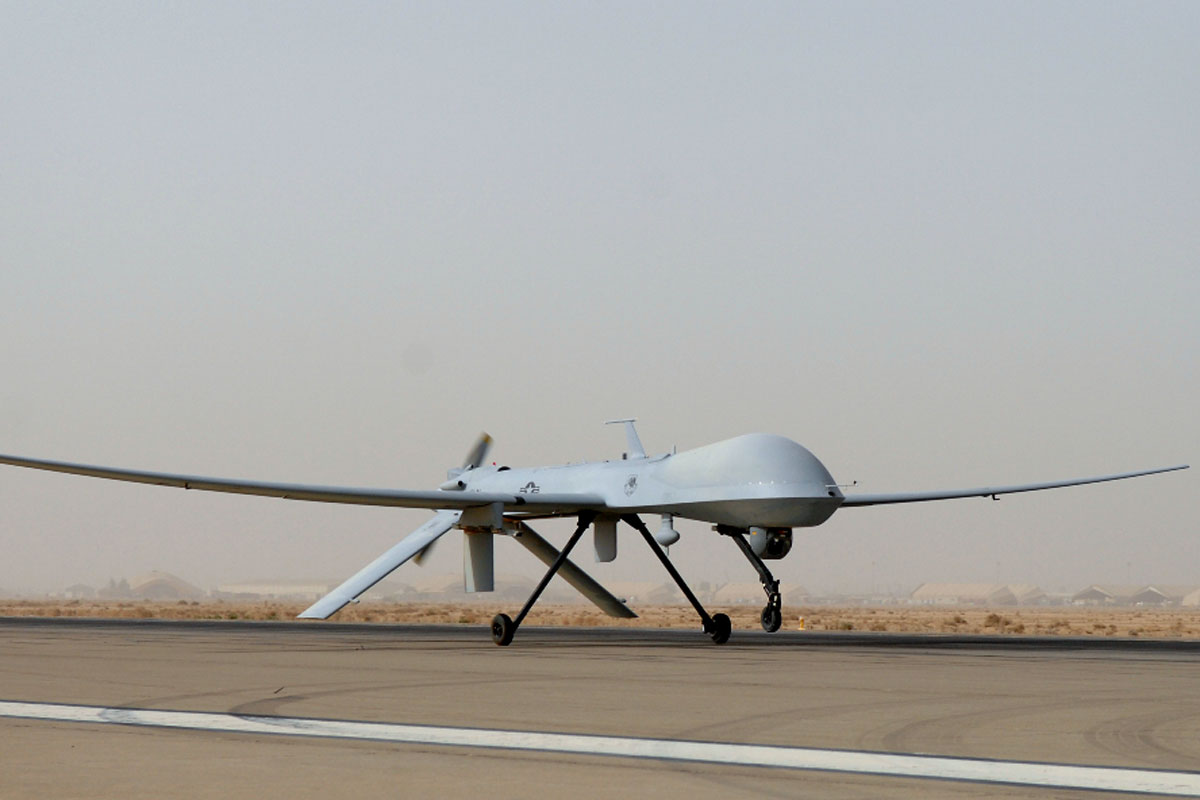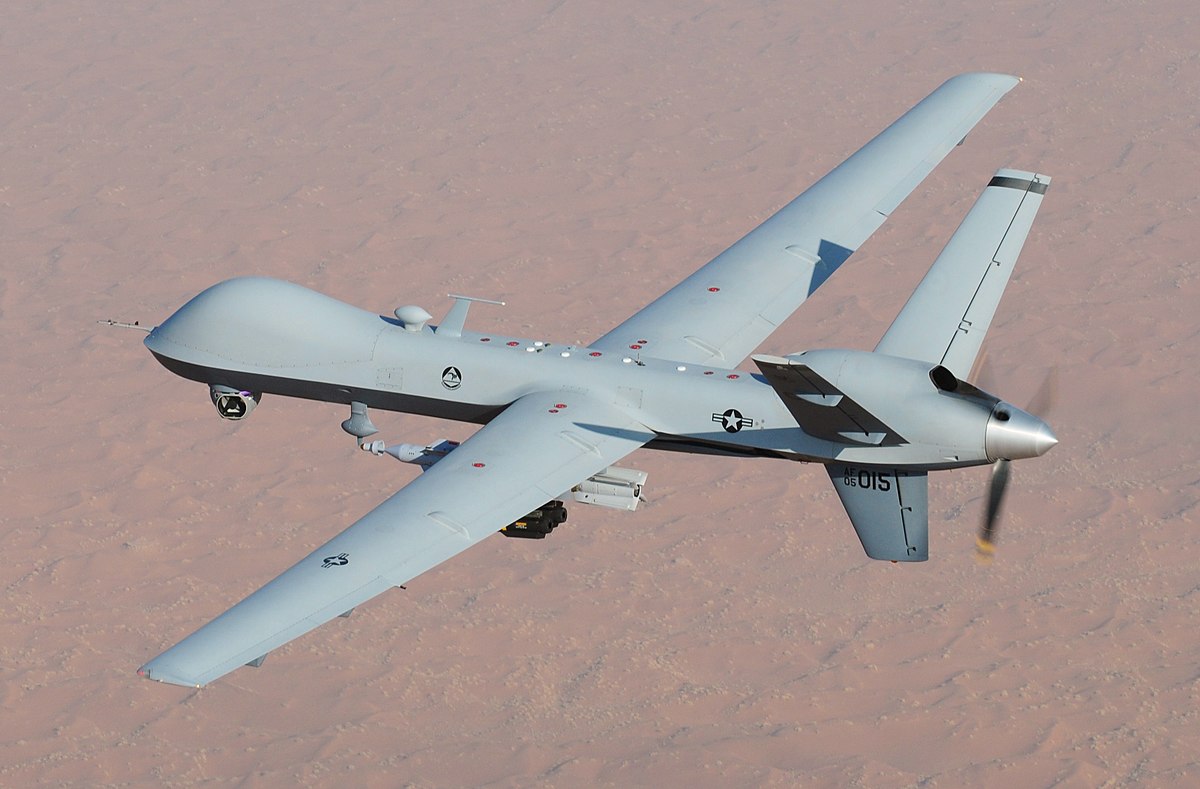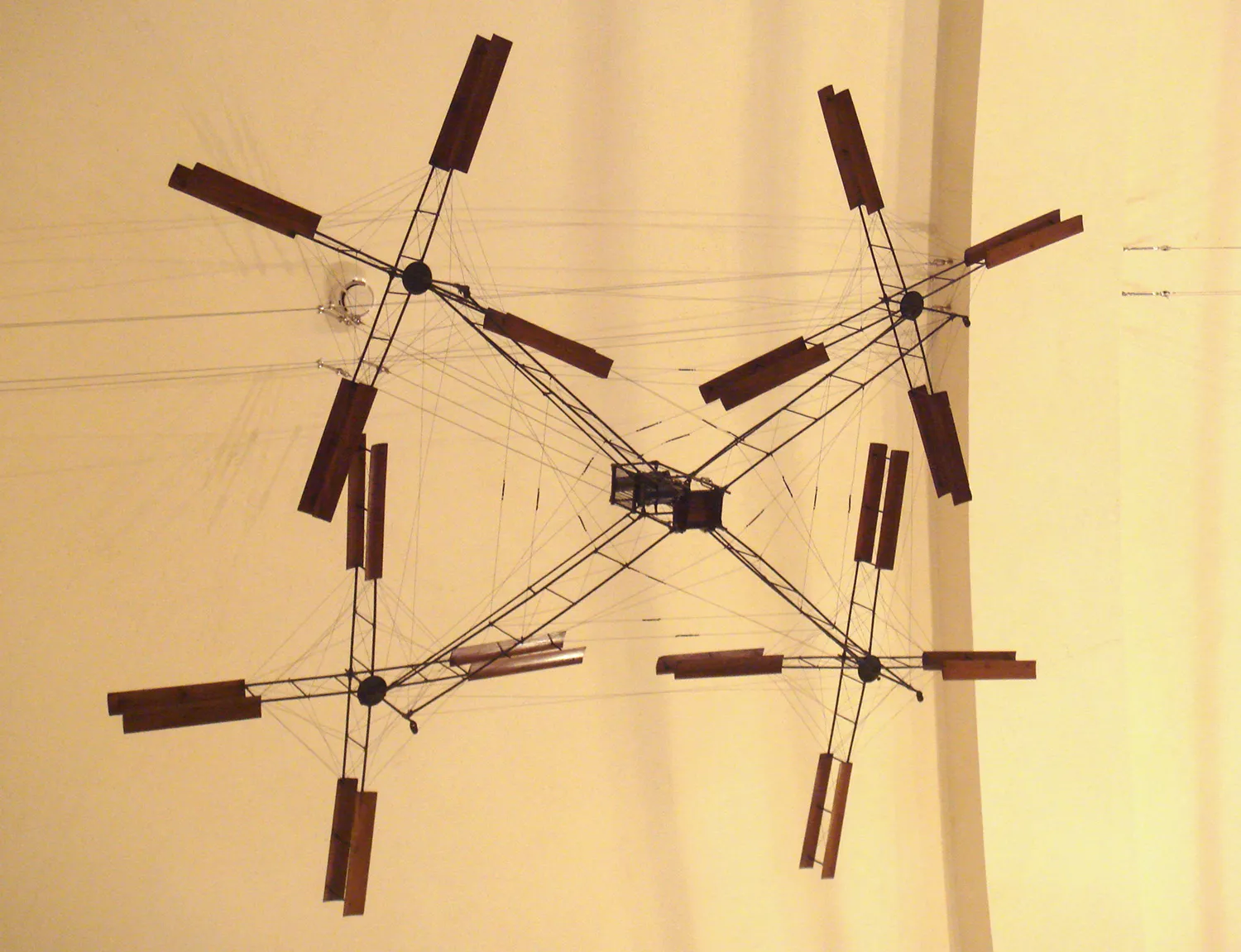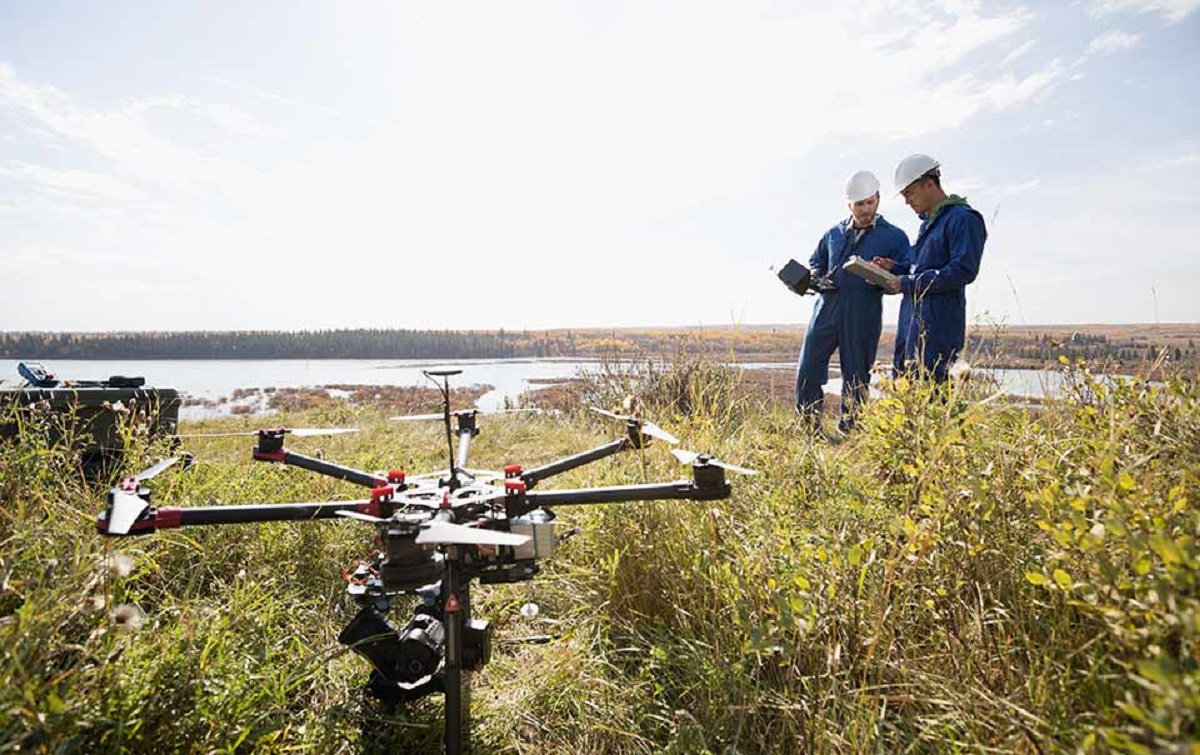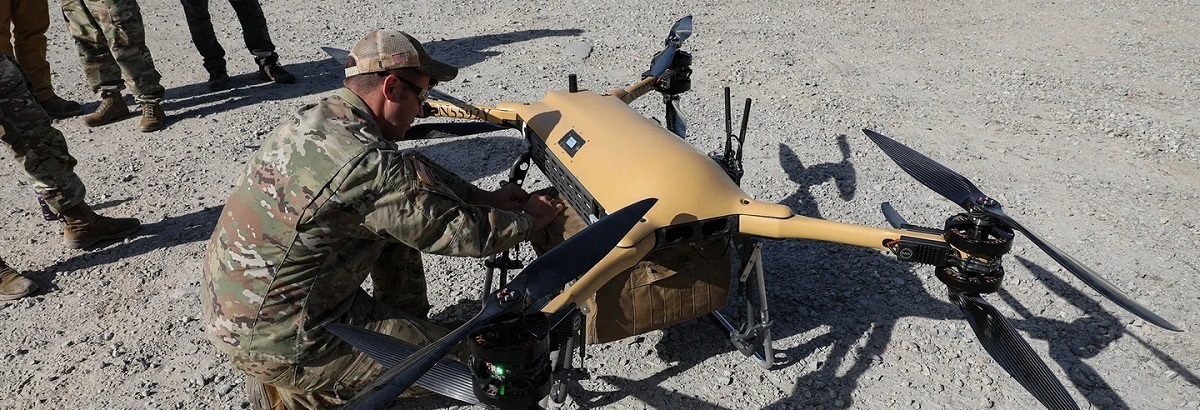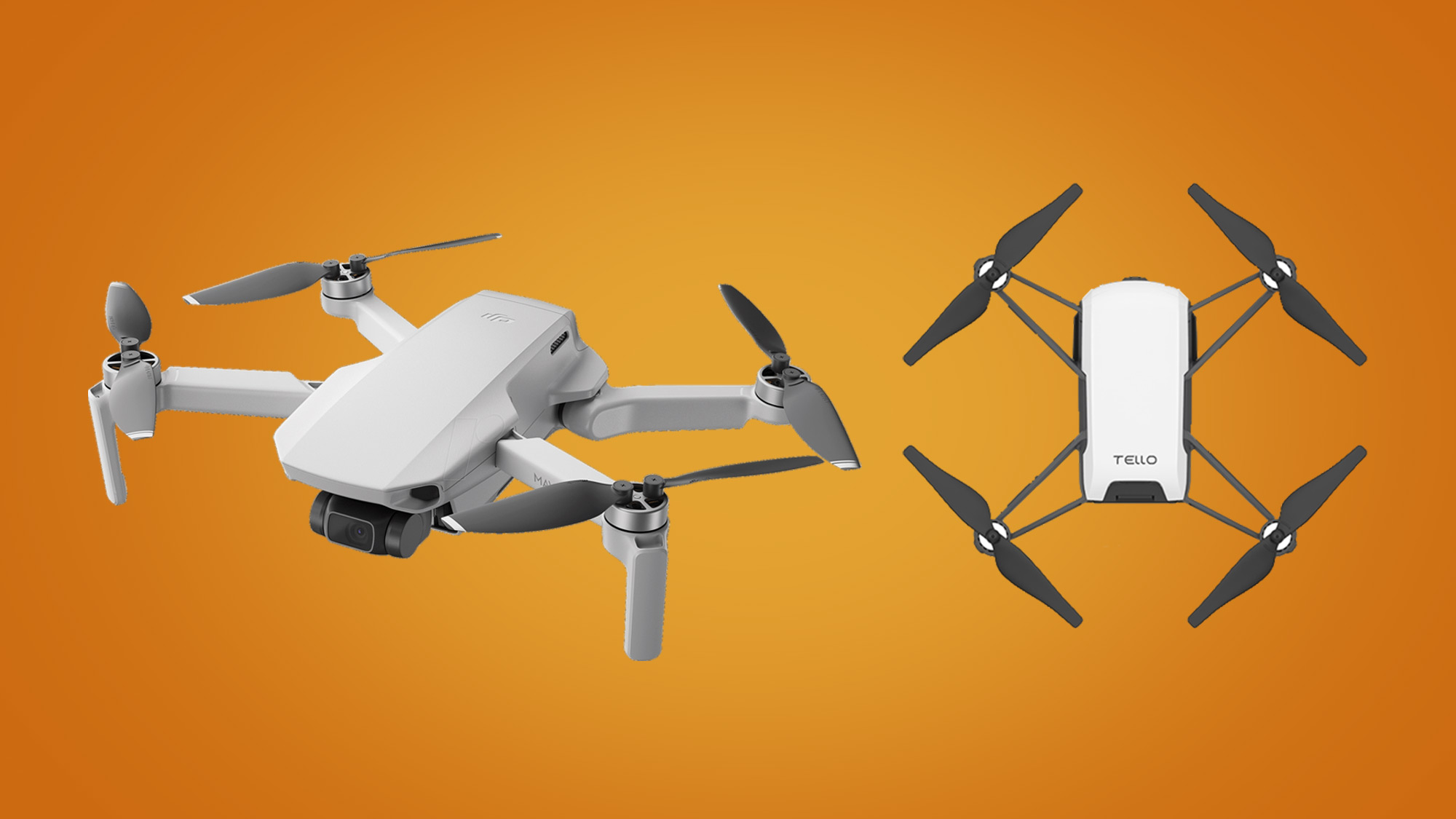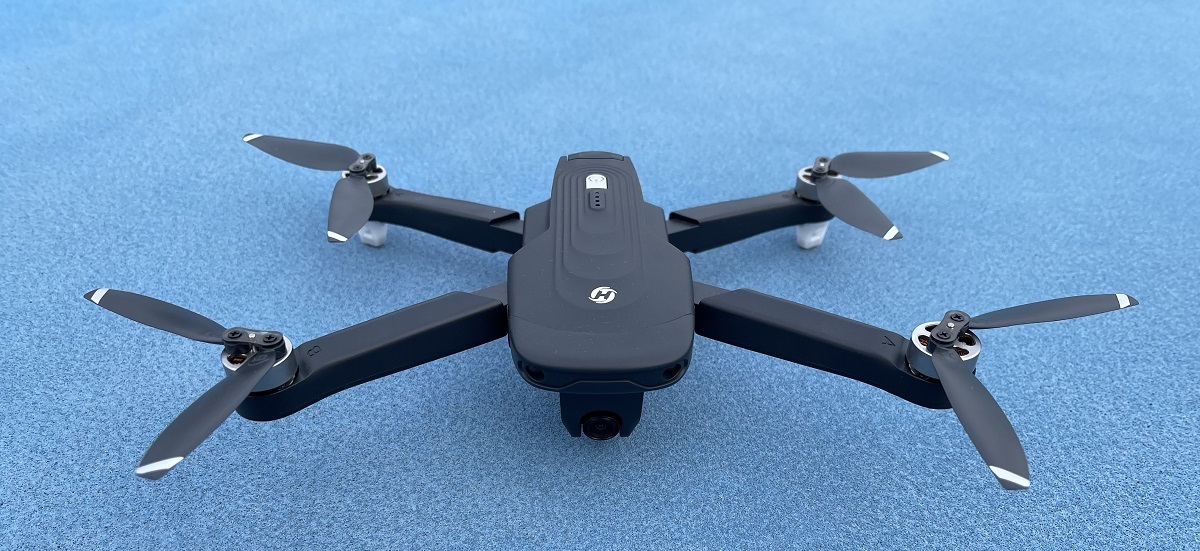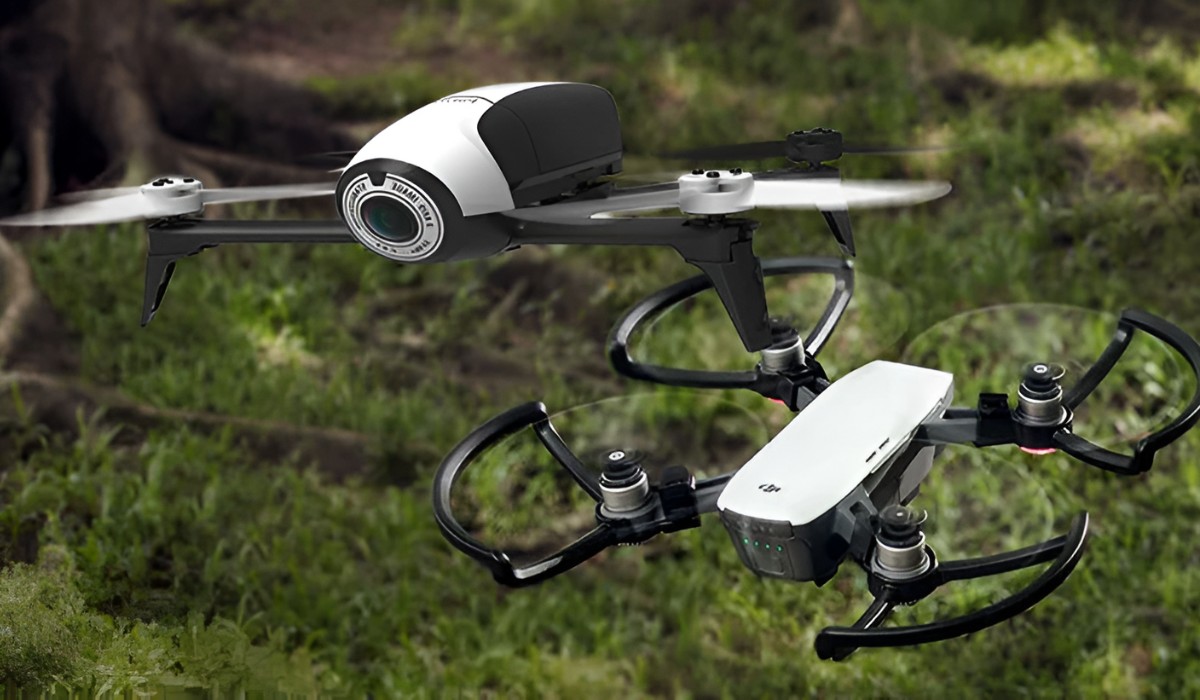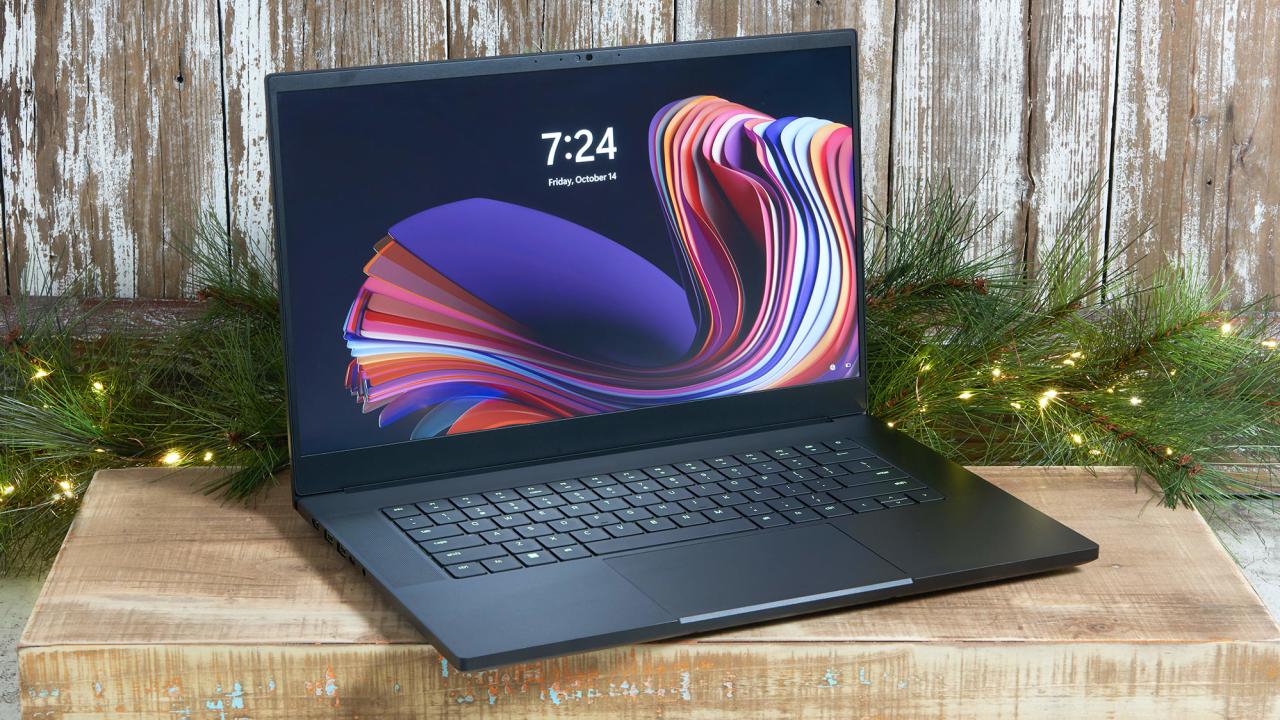Introduction
Predator drones, also known as unmanned aerial vehicles (UAVs), have revolutionized modern warfare and surveillance. These advanced aircraft are equipped with cutting-edge technology and have become an integral part of military operations around the world. One of the key factors that determine the effectiveness of a predator drone is its flight time.
The flight time of a predator drone refers to the duration it can stay airborne before needing to return to base for refueling or recharging. It plays a crucial role in determining the drone’s operational capabilities, as a longer flight time allows for extended periods of surveillance, reconnaissance, and potential engagement with targets.
Understanding the factors that influence a predator drone’s flight time is vital in exploring its capabilities and limitations. Key factors include the power source, size and weight, payload capacity, flight speed and altitude, range, and communication systems. By analyzing these factors, we can gain insights into the maximum time a predator drone can stay in the air without any external limitations.
Furthermore, exploring the longest recorded flight times of predator drones gives us an idea of the cutting-edge developments in UAV technology and the potential for increased flight durations in the future. However, it is important to note that various factors can affect the overall flight time, and these factors will be discussed in detail later in the article.
In this article, we will delve into the intricacies of predator drone flight times, exploring the key factors that contribute to their duration in the air. We will also examine the longest recorded flight times and the potential impact of future advancements on expanding flight durations. By the end of this article, you will have a comprehensive understanding of the flight capabilities of predator drones and their impact on military and surveillance operations.
What is a Predator Drone?
A predator drone, officially known as the General Atomics MQ-1 Predator, is an unmanned aerial vehicle (UAV) primarily used by the United States military for surveillance, reconnaissance, and targeted airstrikes. It is a remotely piloted aircraft system with advanced capabilities that enable it to perform various missions without putting human pilots at risk.
The predator drone is equipped with a range of sophisticated technology, including surveillance cameras, sensors, and communication systems. It has the capability to collect high-resolution imagery and real-time data, making it an indispensable tool for military operations and intelligence gathering.
The drone’s design is intended to provide long-endurance flights, allowing it to stay in the air for extended periods of time. This feature is crucial for conducting surveillance missions and tracking targets over a large area. The predator drone is known for its ability to fly at high altitudes and maintain a steady position for an extended period, providing continuous data collection.
In addition to its surveillance capabilities, the predator drone can also be armed with weapons, including Hellfire missiles, for targeted airstrikes. Its ability to loiter above a designated area for an extended time allows it to locate and engage enemy targets with precision, minimizing collateral damage.
The use of predator drones has significantly transformed modern warfare, offering a combination of surveillance, reconnaissance, and strike capabilities in a single platform. They provide a valuable advantage to military forces by enabling them to gather critical information and engage targets without risking human lives.
Overall, the predator drone is a highly advanced and versatile aircraft that has revolutionized military operations. Its ability to stay in the air for extended periods and carry out a range of missions, including surveillance and targeted strikes, has made it an integral component of modern military strategy.
Key Factors in Drone Flight Time
The flight time of a drone is influenced by various factors that determine its endurance in the air. These factors are critical in determining how long a drone can stay operational before requiring a recharge or refuel. Understanding these key factors is essential to optimize flight time and maximize the drone’s capabilities. Let’s explore the primary factors that contribute to drone flight time:
- Power Source: The type of power source used in a drone significantly impacts its flight time. Most consumer drones use rechargeable lithium polymer (LiPo) batteries, while larger and more advanced drones used in military applications may rely on hybrid or fuel-powered engines. The efficiency and capacity of the power source are crucial determinants of flight duration.
- Size and Weight: The size and weight of a drone directly affect its flight time. Larger drones typically have more space to accommodate larger batteries and can carry more fuel, which can extend their flight time. On the other hand, lightweight drones can benefit from improved maneuverability but may have shorter flight durations due to limited battery capacity.
- Payload Capacity: The payload capacity of a drone, including any cameras, sensors, or additional equipment, can also impact flight time. Carrying a heavier payload requires more power, potentially reducing the overall flight duration. Drone operators must consider payload requirements and balance it with flight time limitations.
- Flight Speed and Altitude: The speed and altitude at which a drone operates affect its energy consumption. Higher speeds and altitudes often require greater power, reducing the overall flight time. Optimal flight planning and mission objectives should take into account the necessary speed and altitude to maximize flight duration.
- Range and Communication: The range of a drone and the reliability of its communication systems play a crucial role in flight time. Drones that are designed for longer range operations often have advanced communication systems to maintain a stable connection with the operator. The efficiency and effectiveness of these systems can impact flight time by minimizing the risk of signal loss or interference.
These key factors work together to determine how long a drone can stay airborne. It is crucial for drone operators and manufacturers to carefully consider these factors when designing and operating drones to achieve optimal flight time and mission success.
Power Source
The power source of a drone is a critical factor in determining its flight time. The type of power source directly affects the duration an unmanned aerial vehicle (UAV) can stay airborne before requiring a recharge or refuel. There are several common power sources used in drones, each with its advantages and limitations.
One of the most commonly used power sources in consumer and smaller drones is the rechargeable lithium polymer (LiPo) battery. LiPo batteries are lightweight, have high energy density, and can provide a decent flight time. The flight time of a drone powered by LiPo batteries can vary depending on factors such as the drone’s weight, size, and power efficiency. Generally, drones powered by LiPo batteries can have flight times ranging from 10 to 30 minutes.
For larger and more advanced drones, alternative power sources are often employed to achieve longer flight durations. Hybrid power systems, which combine a conventional combustion engine with an electric generator, are sometimes used. These systems offer increased endurance by utilizing the efficiency of the combustion engine combined with the lightweight and high-energy density of batteries. Hybrid-powered drones can stay airborne for several hours, making them ideal for long-endurance missions.
In military applications, some drones are equipped with fuel-powered engines, commonly gasoline engines, to achieve extended flight durations. Unlike battery-powered drones, fuel-powered drones can carry large amounts of fuel, allowing them to stay in the air for up to 24 hours or more. These drones are primarily used for surveillance, reconnaissance, and intelligence gathering, providing real-time monitoring and capturing critical data over long durations.
Additionally, advancements in solar technology have made solar-powered drones possible. These drones utilize solar panels mounted on their wings or fuselage to convert sunlight into electrical energy, which powers the drone’s systems and charges the onboard batteries. Solar-powered drones have the potential for indefinite flight durations since they can continuously generate power during daylight hours. They are particularly useful for aerial mapping, environmental monitoring, and communication relay missions.
It is important to note that the power source used in a drone not only affects flight time but also weight and overall performance. Different power sources carry their own advantages and disadvantages, and selecting the appropriate power source depends on the specific mission requirements and desired flight time.
In the next sections, we will explore other factors that impact drone flight time, including the size and weight of the drone, payload capacity, flight speed and altitude, range, and communication systems.
Size and Weight
The size and weight of a drone are significant factors that directly impact its flight time. These physical characteristics influence the overall performance and energy efficiency of the unmanned aerial vehicle (UAV). Understanding the relationship between size, weight, and flight time is crucial for optimizing the drone’s capabilities and ensuring successful missions.
Larger drones generally have more space to accommodate larger batteries or fuel tanks, allowing for increased energy storage capacity. This additional power supply enables a longer flight time compared to smaller drones. Furthermore, the increased size often translates to better stability and payload capacity, allowing the drone to carry additional equipment, which can include more advanced cameras, sensors, or other mission-specific payloads.
On the other hand, lightweight drones have the advantage of improved maneuverability and agility. These drones are typically designed to be portable and easy to deploy in various scenarios. However, their flight time is often lower than that of larger drones due to limited battery capacity. Lightweight drones are commonly used for shorter missions where agility and rapid deployment are prioritized over extended flight durations.
The weight of a drone is closely related to its power consumption and energy efficiency. A heavier drone requires more power to stay airborne due to increased energy demands to overcome gravity and maintain stability. This higher power consumption, in turn, reduces the overall flight time. On the contrary, lighter drones consume less power, allowing for longer flights with the same power source.
Additionally, the weight distribution and balance of a drone can affect its flight dynamics. Uneven weight distribution or improper balance may result in increased energy expenditure and reduced flight time. Drone manufacturers carefully consider weight distribution and balance to ensure optimal flight characteristics and energy efficiency.
It is crucial for drone operators to evaluate their mission requirements and choose a drone size and weight that aligns with their specific needs. If longer flight time is a priority, opting for a larger and heavier drone with a higher energy storage capacity and greater payload capacity is recommended. However, if agility and quick deployment are crucial, a smaller and lighter drone may be more suitable, even if it sacrifices some flight time.
Overall, understanding the relationship between size, weight, and flight time is essential for drone operators to select the right UAV for the intended missions. Striking the right balance between size, weight, and flight time ensures optimal performance and maximizes the effectiveness of the drone in fulfilling its designated tasks.
Payload Capacity
The payload capacity of a drone plays a crucial role in its flight time. The payload refers to any additional equipment, sensors, cameras, or other accessories carried by the unmanned aerial vehicle (UAV) during a mission. The weight and nature of the payload directly impact the drone’s energy consumption and, consequently, its flight duration.
When a drone carries a heavier payload, it requires more power to stay airborne. The energy demands increase as the drone needs to overcome both the weight of the payload and maintain its stability and maneuverability. This increased power consumption reduces the overall flight time of the drone.
Drone manufacturers specify the maximum payload capacity that the UAV can carry while maintaining optimal flight characteristics and stability. Exceeding the recommended payload capacity can negatively affect flight time and potentially compromise flight safety.
There is a trade-off between payload capacity and flight time. If a drone is equipped with a heavier payload, it will have a shorter flight time. This trade-off often necessitates careful consideration of the mission requirements and payload specifications.
Some drones are specifically designed to carry heavier payloads, while others prioritize extended flight durations with lighter payloads. The selection of the appropriate drone depends on the specific mission objectives and the types of equipment or sensors that need to be carried.
For example, drones used in aerial photography or videography often carry advanced cameras and gimbals for stable and high-quality footage. These drones are typically designed to have a lower payload capacity as their main focus is capturing aerial images and videos rather than extended flight durations. In contrast, drones used for surveillance or payload delivery may prioritize larger payload capacity while maintaining a reasonable flight time.
It is important to carefully evaluate the payload requirements of a mission to ensure that the selected drone can effectively carry the necessary equipment without compromising flight time. Understanding the relationship between payload capacity and flight duration is crucial to optimize the drone’s performance and successfully accomplish mission objectives.
In the next sections, we will delve into other factors that influence drone flight time, including flight speed and altitude, range, and communication systems.
Flight Speed and Altitude
The flight speed and altitude at which a drone operates have a significant impact on its flight time. These factors directly influence the energy consumption and power requirements of the unmanned aerial vehicle (UAV), ultimately affecting its overall flight duration.
When a drone operates at higher speeds or altitudes, it typically experiences increased aerodynamic resistance and requires more power to maintain its flight. Higher speeds can result in greater air resistance, requiring the drone’s motors to work harder to overcome it. Similarly, flying at higher altitudes can lead to reduced air density, which affects the drone’s lift and thrust, necessitating more power to maintain stable flight.
The increased power demands associated with higher speeds or altitudes can significantly impact the flight time of a drone. As more power is consumed in maintaining the desired speed or altitude, the overall flight duration is reduced. Consequently, drone operators often need to carefully consider the trade-off between flight speed, altitude, and flight time to optimize their mission objectives.
On the other hand, flying at lower speeds or altitudes can improve energy efficiency and prolong flight time. Slower speeds reduce drag and decrease the energy required to propel the drone through the air, allowing for longer endurance. Similarly, flying at lower altitudes where air density is higher provides better aerodynamic lift, resulting in enhanced energy efficiency and extended flight durations.
It is crucial to note that different drone models have varying flight specifications, including maximum speeds and altitude capabilities. Drone manufacturers provide information on recommended operating speeds and altitudes to achieve optimal flight times. Being aware of these guidelines ensures that the drone is operated within its intended specifications, maximizing its overall flight duration.
Drone operators must carefully consider the mission requirements when determining the appropriate flight speed and altitude. If the objective is to cover larger areas or capture wide-ranging data, flying at higher speeds and altitudes may be necessary. However, if extended flight durations are of paramount importance, slower speeds and lower altitudes are preferable.
To optimize flight time, drone operators can plan their flight missions considering the desired speeds and altitudes for specific segments. By adjusting the speed and altitude throughout the mission to minimize power consumption, operators can extend the flight time and maximize the efficiency of the UAV.
In the next sections, we will delve into other factors that influence drone flight time, including range and communication systems.
Range and Communication
The range and communication capabilities of a drone are crucial factors that can affect its flight time. The range refers to the maximum distance a drone can travel from its base or operator while maintaining a reliable connection, while communication systems enable the exchange of real-time information between the drone and its operator.
A drone’s range is determined by its communication system and the transmission capabilities of its remote control or ground station. It is essential for the drone to stay within range to ensure continuous control and proper monitoring during the flight. If a drone goes beyond its designated range, the communication link can weaken or be lost, making it challenging to operate the UAV effectively.
The range of a drone can impact flight time because the drone must remain within communication range to receive instructions and transmit data back to the operator. If a drone has a shorter range, it may be limited to flying closer to the base or operator, reducing the overall flight duration.
Similarly, communication systems play a vital role in flight time. The efficiency, reliability, and stability of the communication link between the drone and the ground station influence the drone’s operational capabilities and duration in the air. A stable and uninterrupted connection ensures seamless control, data transmission, and command updates between the operator and the drone.
Advanced communication systems, such as those utilizing radio frequency or satellite communication, can enable drones to operate over greater distances, expanding their range and flight time. These systems provide a reliable connection, even in remote or challenging environments, enabling the drone to cover larger areas and carry out longer missions.
It is important for drone operators to be aware of the communication range limitations of their drones and to remain within the specified operating range. This ensures that the drone remains within control and communication range to maximize flight time and mission effectiveness.
Additionally, drone operators can optimize flight time by planning the flight route and trajectory to minimize potential signal interference or obstacles that can disrupt communication. Careful consideration of the topography, weather conditions, and potential signal interferences can help maintain a stable and reliable communication link throughout the flight.
In summary, the range and communication capabilities of a drone directly impact its flight time. Maintaining a reliable connection within the designated range and utilizing robust communication systems enable longer flight durations and enhance the overall performance of the drone.
Typical Flight Time of Predator Drones
Predator drones are known for their long-endurance flight capabilities, allowing for extended periods of surveillance, reconnaissance, and potential engagement. The typical flight time of a predator drone can vary depending on several factors, including the specific model, mission requirements, and payload configuration.
Generally, the flight time of predator drones falls within the range of 24 to 40 hours. This impressive duration is made possible by a combination of factors, including advanced power systems, efficient aerodynamics, and optimized mission planning and control.
One of the primary contributors to the extended flight time of predator drones is their utilization of fuel-powered engines. The engines, typically gasoline-powered, are highly efficient and allow for the drone to carry a substantial amount of fuel, ensuring prolonged endurance in the air. This extended flight time is especially advantageous for long-duration surveillance missions and target tracking, as it provides an uninterrupted view and allows operators to gather critical intelligence over extended periods.
The size and weight of predator drones also contribute to their long flight durations. The larger size of these drones allows for the inclusion of bigger fuel tanks and more advanced power systems, which, in turn, supports longer flights. Additionally, the weight distribution and balance of the drones are carefully optimized to maximize fuel efficiency and flight time.
Furthermore, predator drones are equipped with advanced flight control systems and autonomous capabilities that enable efficient energy management during their missions. These systems allow the drone to optimize its flight path, adjust speed and altitude, and dynamically manage other flight parameters to minimize energy consumption.
It is important to note that the specific mission requirements and payloads can affect the flight time of predator drones. Carrying heavier payloads, such as additional surveillance equipment or munitions, increases power consumption and reduces overall flight duration.
While the typical flight time of predator drones is impressive, it is essential to have access to appropriate infrastructure for refueling, maintenance, and operator control. Operational logistics, such as aerial refueling or return-to-base operations, can significantly extend the endurance of these drones in continuous missions.
Overall, predator drones demonstrate remarkable flight time capabilities, allowing for extended operations and constant monitoring. Their long-endurance flights provide a strategic advantage for military operations, surveillance missions, and intelligence gathering, making them a valuable asset in today’s modern warfare and security efforts.
Longest Recorded Flight Time
Over the years, advancements in drone technology have led to impressive developments in flight duration. The longest recorded flight time of a drone showcases the continuous efforts to extend the endurance and capabilities of unmanned aerial vehicles (UAVs).
In recent years, solar-powered drones have achieved some of the longest flight durations. Solar-powered drones use photovoltaic cells mounted on their wings or fuselage to convert sunlight into electricity, which powers the drone’s systems and charges onboard batteries. These drones have the potential for indefinite flight durations during daylight hours, as they continuously generate power from the sun.
A notable milestone in solar-powered drone flight time was achieved by the Zephyr S, developed by Airbus Defence and Space. In 2018, the Zephyr S flew for 26 days, 23 hours, and 57 minutes straight, setting a new world record for the longest duration flight by an unmanned aircraft. This significant achievement showcased the incredible potential of solar-powered drones and their ability to revolutionize various applications, including communication relays, environmental monitoring, and disaster response.
Alongside solar-powered drones, fuel-powered UAVs have also demonstrated impressive flight durations. The DARPA Vulture, an experimental surveillance drone, set a record in 2011 by staying airborne for more than 5 years. This drone was designed to fly at high altitudes in a perpetual flight configuration, utilizing a series of innovative technologies and a powerful fuel-powered engine.
It is important to note that these record-breaking flight times were achieved under specific conditions and with specialized drone models. The ability to sustain flight for such extended durations requires careful planning, advanced technologies, and appropriate infrastructure to support continuous operations, such as aerial refueling or remote control from ground stations.
While these groundbreaking achievements highlight the potential of drone flight times, it is essential to consider practical operational limitations for everyday applications. Factors such as payload requirements, weather conditions, flight regulations, and maintenance necessities can impact the actual flight durations achievable in real-world scenarios.
Continued research and development in the field of drone technology aim to push the boundaries of flight time. Advancements in power systems, energy storage, aerodynamics, and autonomous flight management will further enhance the endurance of drones, enabling longer flight durations for a variety of missions.
The pursuit of longer flight durations in drones showcases the ongoing commitment to extend operational capabilities, improve efficiency, and revolutionize various industries through unmanned aerial vehicles.
Factors that Affect Flight Time
Several factors can significantly affect the flight time of a drone, including its power source, size and weight, payload capacity, flight speed and altitude, range, and communication systems. Understanding these factors is essential for optimizing flight time and maximizing the drone’s operational capabilities.
Power Source: The type of power source used in a drone, whether it’s a rechargeable lithium polymer (LiPo) battery, a hybrid power system, or a fuel-powered engine, directly impacts its flight time. The efficiency and capacity of the power source determine how long the drone can stay airborne before requiring recharging or refueling.
Size and Weight: The size and weight of a drone play a crucial role in flight time. Larger drones often have more space to accommodate larger batteries or fuel tanks, allowing for increased energy storage and longer flight durations. On the other hand, lightweight drones offer improved maneuverability but typically have shorter flight durations due to limited battery capacity.
Payload Capacity: Carrying a heavier payload requires more power, which reduces the overall flight time of a drone. The payload capacity of a drone, including cameras, sensors, or additional equipment, must be carefully considered to optimize flight time without compromising mission objectives.
Flight Speed and Altitude: Flying at higher speeds or altitudes increases energy consumption and can result in shorter flight times. The drone’s aerodynamic resistance, power demands, and air density at higher altitudes all affect flight time. Adjusting flight speed and altitude throughout the mission can help optimize energy consumption and maximize flight duration.
Range and Communication: Drones must remain within communication range to ensure continuous control and transmission of data. Going beyond the recommended range weakens or severs the communication link, impacting flight time. Communication systems that ensure stable and reliable connections maximize flight duration and mission effectiveness.
Environmental Factors: Weather conditions, such as wind speed and temperature, can affect flight time. Strong winds increase energy consumption, while extreme temperatures can impact battery performance. Pilots must take into account these environmental factors and adjust flight plans accordingly to optimize flight time.
Mission Planning and Control: Effective mission planning and control are vital for optimizing flight time. Proper route planning, optimizing flight paths, and employing autonomous flight management systems can help minimize power demands and maximize flight duration.
It is essential to note that each factor interacts with the others and can have a cumulative impact on flight time. Drone operators must carefully consider these factors and strike a balance between mission requirements, energy efficiency, and flight capabilities to maximize the drone’s overall flight time and operational effectiveness.
Conclusion
The flight time of a drone is a critical factor in determining its operational capabilities and effectiveness. Understanding the key factors that affect flight time, such as the power source, size and weight, payload capacity, flight speed and altitude, range, and communication systems, is essential for optimizing performance and achieving mission objectives.
Predator drones, renowned for their long-endurance flight capabilities, demonstrate the potential of unmanned aerial vehicles (UAVs) in extended missions. These drones utilize advanced power systems, efficient aerodynamics, and optimized flight control to achieve flight durations ranging from 24 to 40 hours, making them valuable assets for military operations, surveillance missions, and intelligence gathering.
Factors such as the power source, size, weight, and payload capacity directly impact flight time. The type of power source, whether it’s rechargeable batteries, hybrid systems, or fuel-powered engines, plays a vital role in determining how long a drone can stay airborne. Larger drones can accommodate bigger batteries or fuel tanks, allowing for extended flight durations, while lightweight drones prioritize maneuverability over prolonged flight times.
The payload carried by a drone can affect flight time by increasing the power demands required to keep the drone airborne. Flight speed and altitude also influence energy consumption, with higher speeds and altitudes generally resulting in reduced flight times. Communication range and systems play a crucial role in maintaining control and maximizing flight duration.
Other factors, such as environmental conditions, mission planning, and control, also influence flight time. Considering these factors and striking a balance between mission requirements, energy efficiency, and flight capabilities will optimize the overall flight time and operational effectiveness of a drone.
Looking ahead, advancements in drone technology continue to push the boundaries of flight time. Solar-powered drones and fuel-powered UAVs have set impressive records for extended flight durations, showcasing the potential for even longer flights in the future. Continued research and development aim to improve power systems, energy storage, aerodynamics, and autonomous flight management to further enhance drone endurance.
As technology evolves, it is crucial to keep pace with the latest innovations and advancements to harness the full capabilities of drones. By considering the key factors that affect flight time and optimizing mission planning, drone operators can maximize flight durations, improve operational efficiency, and fulfill a wide range of applications across various industries.







